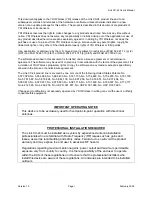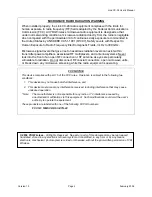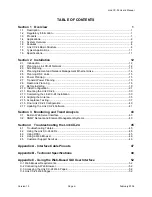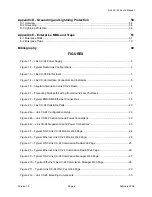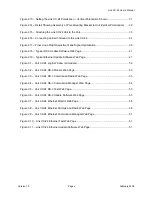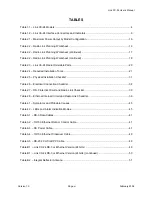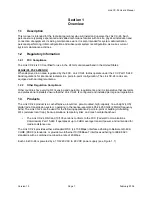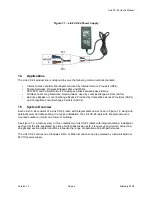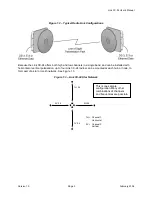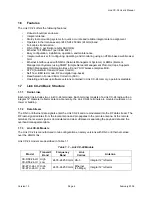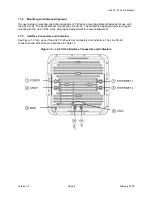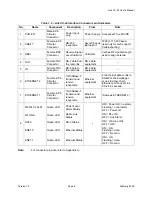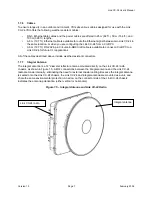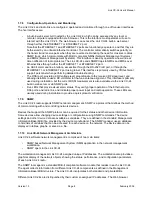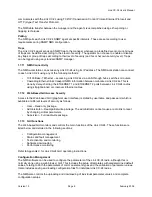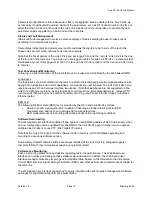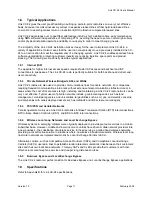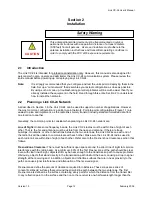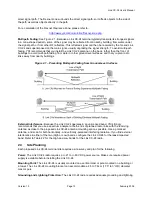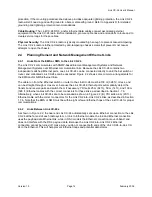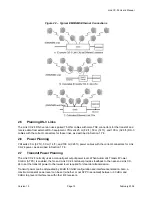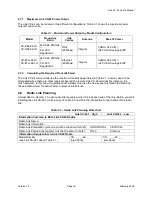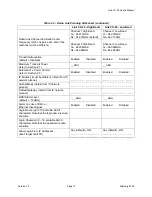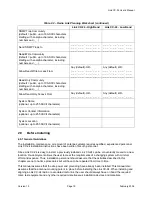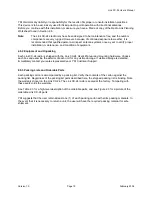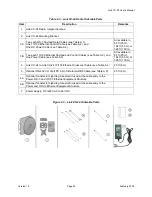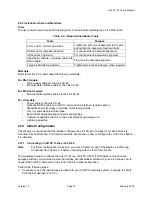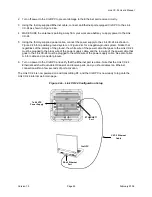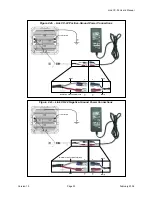
Link CX-24 User’s Manual
Version 1.0
Page 8
February 2004
1.7.8 Configuration, Operation, and Monitoring
The Link CX-24 and radio link are configured, operated and monitored through one of five user interfaces.
The five interfaces are:
•
A built-in web server GUI hosted by the Link CX-24, which can be accessed by any local or
remote computer equipped with a web browser. This is the interface most operators will use to
interact with the Link CX-24. The web browser can access the Link CX-24 built-in web server
through either the ETHERNET 1 or ETHERNET 2 port.
Note that the ETHERNET 1 and ETHERNET 2 ports are functionally equivalent, and that they are
both served by an onboard Ethernet controller. The controller automatically switches polarity on
the transmit and receive pairs when they are reversed, eliminating the need for crossover cables.
•
SNMP traps, which communicate with MIB-II compliant NMSs (Network Management Systems)
and EMSs (Element Management Systems). This interface is used by operators who want real-
time notification of radio problems. The Link CX-24 sends SNMP traps to NMSs and EMSs over
Ethernet links through either the ETHERNET 1 or ETHERNET 2 port.
•
An ASCII command line interface, accessible through the RS-232 Craft port, or through the
ETHERNET 1 or ETHERNET 2 port using telnet. This interface is primarily used by YDI technical
support personnel when performing detailed troubleshooting.
•
The RSSI port, providing a DC voltage level proportionate to the received RF signal level, and
allowing installers to use a DC voltmeter to fine-tune antenna alignment. This interface is primarily
used during installation, but the current RSSI measurement is also available via the Link CX-24
built-in web server or via SNMP polls.
•
Five LEDs that provide visual alarm status. They verify proper operation of the Ethernet ports,
DS3 ports, and radio link, and indicate proper power input and radio operation. These LEDs are
usually used during installation to provide a quick product verification.
1.7.9 SNMP
The Link CX-24 radio supports SNMP network management. SNMP is a protocol that defines the method
of communicating with and controlling network devices.
Devices that support the SNMP protocol can be queried for their status and other device information.
Some devices allow changing device settings or configurations using SNMP commands. The device
settings and other device data are available as variables. They are defined in the standard Management
Information Base (MIB) file, provided by the device manufacturer. The SNMP manager uses a database
to hold lists of variables that can be accessed for each device on the network. The device data can be
displayed in tables, graphs, or saved in a file.
1.7.10 Link CX-24 Network Management Architecture
Link CX-24 software network management is comprised of two main items:
•
SNMP based Network Management System (NMS) application in the network management
workstation.
•
SNMP agent in the Link CX-24.
The workstation manages all Link CX-24 assigned unique IP addresses. The workstation also provides a
graphical display of the network objects showing the status, performance, and configuration parameters
of each Link CX-24 radio.
The SNMP local agent is a standard MIB-II compliant software module that resides in each Link CX-24.
The agent collects information from different Link CX-24 components as defined in the Management
Information Base (MIB) structure. The Link CX-24 incorporates both standard and private MIBs.
Different Link CX-24s are distinguished by their customer-assigned IP addresses. The Web browser
Содержание Link CX-24
Страница 1: ...Version 1 0 February 2004 MNL 500224 001...


